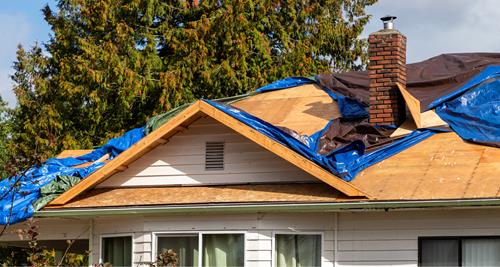When you enter retirement, your income becomes fixed – there’s not much wiggle room, and there’s no chance of getting a promotion or bonus. While many Americans are becoming savvier about retirement savings, there is still this looming “unknown.” Unexpected expenses can come up at any time – think medical bills or home improvements – and when you’re on a fixed income and have a mortgage to pay, you may feel like you’re stuck between a rock and a hard place.
That’s where reverse mortgages come in. A reverse mortgage allows homebuyers, who are over the age of 62, to tap into the equity they’ve built up in their home.
We know what you’re thinking: “This seems almost too good to be true.” It’s not. Let’s break down some of the misconceptions you might have and give you the cold, hard facts.
Myth: You will no longer own your home.
Fact: With a reverse mortgage, you get to keep your home, which is one of the more appealing features of the loan program. The loan is secured by a lien on the home, allowing you to borrow against the value of the home’s equity without having to make monthly mortgage payments. However, there are certain qualifications you’re required to meet – you must continue to occupy the property as your primary residence, pay for property taxes and insurance, and maintain the property according to the Federal Housing Administration (FHA) requirements.
Myth: Your home has to be owned free and clear to qualify.
Fact: To be eligible for a reverse mortgage loan, you either need to own your home outright or hold enough equity to pay off an existing mortgage or lien against the property. The amount of money you can access from a reverse mortgage depends on the appraised value of your home, the age of the youngest borrower, and the loan’s interest rate among other factors.
Myth: My spouse or I can be thrown out of the house when one of us dies.
Fact: A reverse mortgage loan only becomes due or payable when the last surviving borrower or non-borrowing spouse no longer occupies the home as their primary residence. The surviving borrower must also continue to keep up with the loan obligations (paying for property taxes and insurance, maintaining the home according to FHA requirements, etc.).
Myth: My heirs will be responsible for paying back the loan.
Fact: A reverse mortgage is no different than a conventional mortgage when it comes to repayment after the last borrower passes away. The heirs or executor of the estate will have the options to sell the property and use the proceeds to repay the loan, refinance the loan, pay the loan in a lump sum, or issue a deed in lieu of foreclosure to relinquish ownership. What’s unique about reverse mortgages, though, is the fact that they are non-recourse loans, which means the home is the only collateral that the lender can access for repayment. This is a major benefit! Your heirs will never have to pay more than the home is worth.
Myth: A reverse mortgage is a loan of “last resort.”
Fact: Reverse mortgage loans used to be thought of as a last-ditch effort to get cash while retired. The truth is, while many financial products are created for a single purpose, reverse mortgage loans are not a “one size fits all.” In fact, homeowners will have the flexibility to use the proceeds from a reverse mortgage loan in several different ways, such as:
- Lump Sum (only available on a fixed rate) – One single payment to the borrower. This option is suitable if you have the need to access a large amount of money and plan to use it right away.
- Monthly Installments – Regular payments in the amount you need for a set period of time or for the duration of the loan. This option is suitable if you are looking for a steady flow of income every month.
- Line of Credit – Access the available “standby” funds when you need them. The line of credit will grow at the same rate as the balance of the loan. This feature will increase your borrowing capacity as time goes by. The line of credit cannot be cancelled or reduced even if the home decreases in value.
- Other – You can also customize your loan to have more than one disbursement method.
There are plenty of options when it comes to a reverse mortgage – it’s not just a last resort.
Considering a reverse mortgage, or know someone who might benefit from one? Contact a Waterstone Mortgage loan professional today to learn more.
You must live in the home as your primary residence, continue to pay required property taxes, homeowners insurance, and maintain the home according to Federal Housing Administration requirements. Failure to meet these requirements can trigger a loan default that may result in foreclosure. Federal Housing Administration (FHA) mortgage insurance premiums (MIP) will accrue on your loan balance. You will be charged an initial MIP at closing. The initial MIP will be 2% of the home value not to exceed $14,530.50. Over the life of the loan, you will be charged an annual MIP that equals .5% of the outstanding mortgage balance. Subject to credit approval. Property and borrower eligibility requirements apply.





